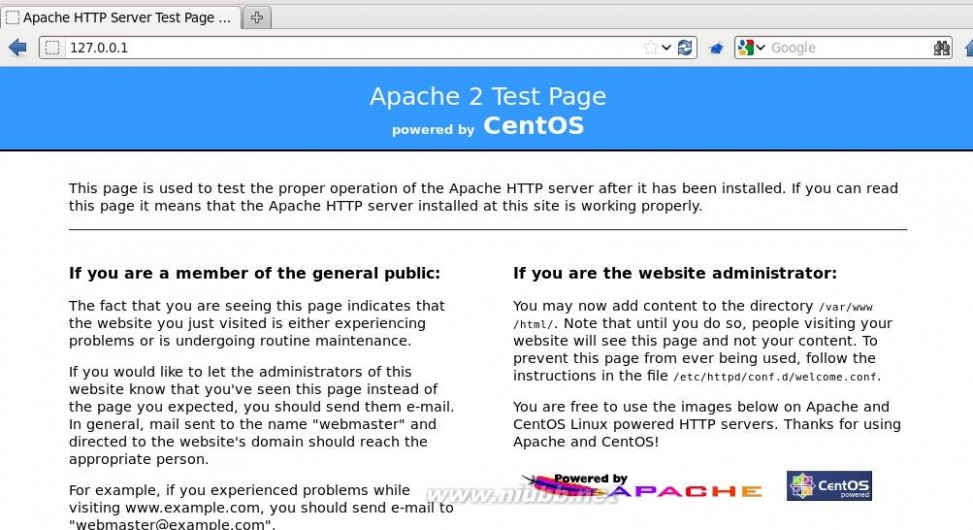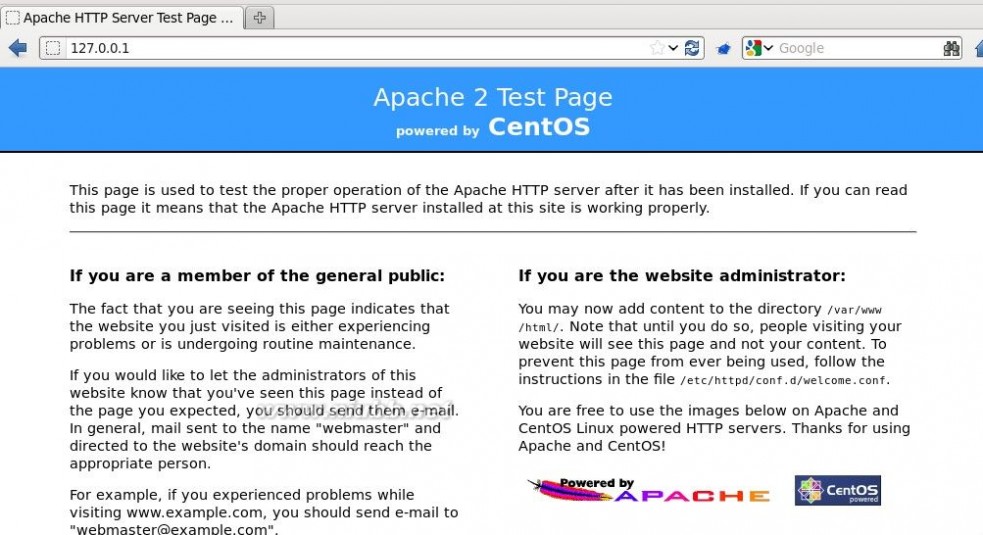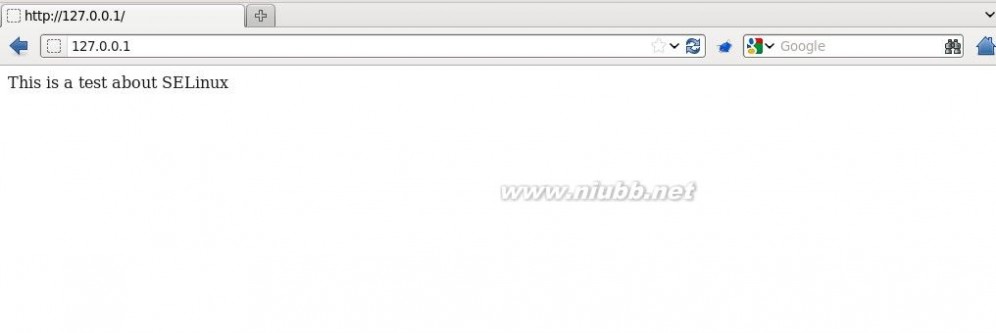一 : 在Linux系统中使用Fish Shell的入门指引
安装以及配置
Linux 和 OS X 基本都可以通过源来安装,实在不行就下载源码编译,不难的。
Ubuntu的话就是这样:
sudo apt-get install fish
chsh -s /usr/bin/fish
当然如果你实在想配置,输入 fish_config 命令会启动 web 管理界面。
什么?逼格太低,非要手动配置。OK, ~/.config/fish/config.fish这就是 fish 的配置文件,类似于 bash 的.bashrc。
我喜欢配置三件东西:
1.问候语(配置config.fish):
set fish_greeting 'Talk is cheap. Show me the code.'
2.命令行提示(在web界面配置,完成后会生成~/.config/fish/functions/fish_prompt.fish):
3.设置接受建议(第三条优势)的快捷键:
修改fish_prompt.fish,增加一条语句:bind ej accept-autosuggestion。同时按下alt和j将接受建议。
优势
语法高亮
不存在的命令会显示为红色。

通配符
集成find命令,递归搜索神器。
智能建议
当按下几个字母后,fish会有智能建议,按下向右箭头将接受建议。
Tab补全
如果补全项超过1个,会列出全部以供选择。
变量
fish是通过set来代替“=”对变量赋值的。
将某目录加入到PATH中也是用set(配置config.sh):
set PATH $PATH /home/mountain/shell
Exports
fish没有export命令,需要用set -x来代替。如果需要擦除变量,就执行set -e。

列表
有些变量有多个值,例如$PATH,fish会把所有值组装成一个列表,可以迭代或者通过下标访问。
命令替换
用法很简单,把命令放在括号里即可。
语法糖
fish 的常用关键字(if、switch、function 等)比 bash 高端、实用很多,但是考虑到公司的生产环境根本不可能安装 fish,导致脚本无法移植,所以对于这部分只能忍痛放弃。
二 : Linux学习之CentOS(三十)--SELinux安全系统基础
您可以通过点击右下角的按钮 来对文章内容作出评价, 也可以通过左下方的关注按钮来关注我的博客的最新动态。(www.61k.com) 如果文章内容对您有帮助, 不要忘记点击右下角的推荐按钮来支持一下哦 如果您对文章内容有任何疑问, 可以通过评论或发邮件的方式联系我: 501395377@qq.com / lzp501395377@gmail.com 如果需要转载,请注明出处,谢谢!!
本篇随笔将记录一下学习SELinux的一些心得与体会...
一、SELinux简介
SELinux(Secure Enhanced Linux)安全增强的Linux是由美国国家安全局NSA针对计算机基础结构安全开发的一个全新的Linux安全策略机制。SELinux可以允许系统管理员更加灵活的来定义安全策略。
SELinux是一个内核级别的安全机制,从Linux2.6内核之后就将SELinux集成在了内核当中,因为SELinux是内核级别的,所以我们对于其配置文件的修改都是需要重新启动操作系统才能生效的。
现在主流发现的Linux版本里面都集成了SELinux机制,CentOS/RHEL都会默认开启SELinux机制。
二、SELinux基本概念
我们知道,操作系统的安全机制其实就是对两样东西做出限制:进程和系统资源(文件、网络套接字、系统调用等)。
在之前学过的知识当中,Linux操作系统是通过用户和组的概念来对我们的系统资源进行限制,我们知道每个进程都需要一个用户才能执行。
在SELinux当中针对这两样东西定义了两个基本概念:域(domin)和上下文(context)。
域就是用来对进行进行限制,而上下文就是对系统资源进行限制。
我们可以通过ps -Z这命令来查看当前进程的域的信息,也就是进程的SELinux信息:
[root@xiaoluo ~]# ps -Z LABEL PID TTY TIME CMD unconfined_u:unconfined_r:unconfined_t:s0-s0:c0.c1023 2503 pts/0 00:00:00 su unconfined_u:unconfined_r:unconfined_t:s0-s0:c0.c1023 2511 pts/0 00:00:00 bash unconfined_u:unconfined_r:unconfined_t:s0-s0:c0.c1023 3503 pts/0 00:00:00 ps
通过ls -Z命令我们可以查看文件上下文信息,也就是文件的SELinux信息:
[root@xiaoluo ~]# ls -Z -rw-------. root root system_u:object_r:admin_home_t:s0 anaconda-ks.cfg drwxr-xr-x. root root unconfined_u:object_r:admin_home_t:s0 Desktop -rw-r--r--+ root root system_u:object_r:admin_home_t:s0 install.log -rw-r--r--. root root system_u:object_r:admin_home_t:s0 install.log.syslog
在稍后我们来探讨一下这些字段所代表的含义。
三、策略
在SELinux中,我们是通过定义策略来控制哪些域可以访问哪些上下文。
在SELinux中,预置了多种的策略模式,我们通常都不需要自己去定义策略,除非是我们自己需要对一些服务或者程序进行保护
在CentOS/RHEL中,其默认使用的是目标(target)策略,那么何为目标策略呢?
目标策略定义了只有目标进程受到SELinux限制,非目标进程就不会受到SELinux限制,通常我们的网络应用程序都是目标进程,比如httpd、mysqld,dhcpd等等这些网络应用程序。
我们的CentOS的SELinux配置文件是存放在 /etc/sysconfig/ 目录下的 selinux 文件,我们可以查看一下里面的内容:
[root@xiaoluo ~]# cat /etc/sysconfig/selinux # This file controls the state of SELinux on the system. # SELINUX= can take one of these three values: # enforcing - SELinux security policy is enforced. # permissive - SELinux prints warnings instead of enforcing. # disabled - No SELinux policy is loaded. SELINUX=enforcing # SELINUXTYPE= can take one of these two values: # targeted - Targeted processes are protected, # mls - Multi Level Security protection. SELINUXTYPE=targeted // 我们的CentOS使用的策略就是目标策略
四、SELinux模式
SELinux的工作模式一共有三种 enforcing、permissive和disabled
①enforcing强制模式:只要是违反策略的行动都会被禁止,并作为内核信息记录
②permissive允许模式:违反策略的行动不会被禁止,但是会提示警告信息
③disabled禁用模式:禁用SELinux,与不带SELinux系统是一样的,通常情况下我们在不怎么了解SELinux时,将模式设置成disabled,这样在访问一些网络应用时就不会出问题了。
上面也说了SELinux的主配置文件是 /etc/sysconfig/selinux
[root@xiaoluo ~]# cat /etc/sysconfig/selinux # This file controls the state of SELinux on the system. # SELINUX= can take one of these three values: # enforcing - SELinux security policy is enforced. # permissive - SELinux prints warnings instead of enforcing. # disabled - No SELinux policy is loaded. SELINUX=enforcing // 我们看到SELinux默认的工作模式是enforcing # SELINUXTYPE= can take one of these two values: # targeted - Targeted processes are protected, # mls - Multi Level Security protection. SELINUXTYPE=targeted
我们SELinux默认的工作模式是enforcing,我们可以将其修改为 permissive或者是disabled
我们如果要查看当前SELinux的工作状态,可以使用 getenforce 命令来查看:
[root@xiaoluo ~]# getenforce Enforcing
当前的工作模式是 enforcing,我们如果要设置当前的SELinux工作状态,可以使用 setenforce [0|1] 命令来修改,setenforce 0表示设置成 permissive,1表示enforcing
【注意:】通过 setenforce 来设置SELinux只是临时修改,当系统重启后就会失效了,所以如果要永久修改,就通过修改SELinux主配置文件
扩展:centos是linux系统吗 / centos linux系统下载 / linux系统centos
[root@xiaoluo ~]# setenforce 0 [root@xiaoluo ~]# getenforce Permissive [root@xiaoluo ~]# setenforce 1 [root@xiaoluo ~]# getenforce Enforcing
[root@xiaoluo ~]# ls -Z -rw-------. root root system_u:object_r:admin_home_t:s0 anaconda-ks.cfg drwxr-xr-x. root root unconfined_u:object_r:admin_home_t:s0 Desktop -rw-r--r--+ root root system_u:object_r:admin_home_t:s0 install.log -rw-r--r--. root root system_u:object_r:admin_home_t:s0 install.log.syslog
我们可以通过 ls -Z 这个命令来查看我们文件的上下文信息,也就是SELinux信息,我们发现其比传统的 ls 命令多出来了 system_u:object_r:admin_home_t:s0 这个东西,我们现在就来分析一下这段语句所代表的含义
system_u:object_r:admin_home_t:s0
这条语句通过:划分成了四段,第一段 system_u 代表的是用户,第二段 object_r 表示的是角色,第三段是SELinux中最重要的信息,admin_home 表示的是类型,最后一段 s0 是跟MLS、MCS相关的东西,暂时不需要管
①system_u指的是SElinux用户,root表示root账户身份,user_u表示普通用户无特权用户,system_u表示系统进程,通过用户可以确认身份类型,一般搭配角色使用。身份和不同的角色搭配时有权限不同,虽然可以使用su命令切换用户但对于SElinux的用户并没有发生改变,账户之间切换时此用户身份不变,在targeted策略环境下用户标识没有实质性作用。
②object_robject_r一般为文件目录的角色、system_r一般为进程的角色,在targeted策略环境中用户的角色一般为system_r。用户的角色类似用户组的概念,不同的角色具有不同的身份权限,一个用户可以具备多个角色,但是同一时间只能使用一个角色。在targeted策略环境下角色没有实质作用,在targeted策略环境中所有的进程文件的角色都是system_r角色。
③admin_home文件和进程都有一个类型,SElinux依据类型的相关组合来限制存取权限。
五、实例
下面我们通过一个实例来看一下上下文 context 的值和SELinux的访问控制
比如说我搭建好了一个Web服务器,我们知道www服务器其默认网页存放位置是在 /var/www/html 这个目录下,我们如果在这里新建一个 index.html 测试页面,启动我们的www服务器,刷新就能见到其内容了,这时我们如果是在我们的 /home 目录下建立一个 index.html 页面,然后将其移动到 /var/www/html 这个目录下,再刷新页面,其还会不会正常显示呢?
首先我们启动我们的 httpd 服务:
[root@xiaoluo ~]# service httpd restart Stopping httpd: [ OK ] Starting httpd: httpd: apr_sockaddr_info_get() failed for xiaoluo httpd: Could not reliably determine the server's fully qualified domain name, using 127.0.0.1 for ServerName [ OK ]
然后打开浏览器,输入我们的 127.0.0.1 来访问,此时看到的界面是Apache的测试界面:

因为我们此时的 /var/www/html 下还不存在任何页面:
[root@xiaoluo home]# ll /var/www/html/ total 0
接下来我们在 /home 目录下建立一个 index.html 的页面,然后将其移动到我们的 /var/www/html 目录下
[root@xiaoluo home]# vi index.html This is a test about SELinux [root@xiaoluo home]# mv index.html /var/www/html/ [root@xiaoluo html]# cd /var/www/html/ [root@xiaoluo html]# ls index.html
此时,按照正常情况,因为html目录下存在了一个index.html的页面,我们此时如果刷新浏览器页面,应该会跳转到index.html页面的

但是事实我们发现,页面还是在这个测试页面,到底是为什么呢?这个就跟我们的SELinux的安全策略有关系了,我们可以去/var/log/audit这个目录下查看audit.log这个文件,从中找出错误信息
[root@xiaoluo html]# tail /var/log/audit/audit.log type=CRED_DISP msg=audit(1369575601.957:289): user pid=3637 uid=0 auid=0 ses=44 subj=system_u:system_r:crond_t:s0-s0:c0.c1023 msg='op=PAM:setcred acct="root" exe="/usr/sbin/crond" hostname=? addr=? terminal=cron res=success' type=USER_END msg=audit(1369575601.957:290): user pid=3637 uid=0 auid=0 ses=44 subj=system_u:system_r:crond_t:s0-s0:c0.c1023 msg='op=PAM:session_close acct="root" exe="/usr/sbin/crond" hostname=? addr=? terminal=cron res=success' type=AVC msg=audit(1369575729.534:291): avc: denied { getattr } for pid=3619 comm="httpd" path="/var/www/html/index.html" dev=sda2 ino=538738 scontext=unconfined_u:system_r:httpd_t:s0 tcontext=unconfined_u:object_r:home_root_t:s0 tclass=file type=SYSCALL msg=audit(1369575729.534:291): arch=c000003e syscall=4 success=no exit=-13 a0=7f34198634f8 a1=7fffbc87bee0 a2=7fffbc87bee0 a3=7f341985ff60 items=0 ppid=3612 pid=3619 auid=500 uid=48 gid=48 euid=48 suid=48 fsuid=48 egid=48 sgid=48 fsgid=48 tty=(none) ses=1 comm="httpd" exe="/usr/sbin/httpd" subj=unconfined_u:system_r:httpd_t:s0 key=(null) type=AVC msg=audit(1369575729.535:292): avc: denied { getattr } for pid=3619 comm="httpd" path="/var/www/html/index.html" dev=sda2 ino=538738 scontext=unconfined_u:system_r:httpd_t:s0 tcontext=unconfined_u:object_r:home_root_t:s0 tclass=file type=SYSCALL msg=audit(1369575729.535:292): arch=c000003e syscall=6 success=no exit=-13 a0=7f34198635c8 a1=7fffbc87bee0 a2=7fffbc87bee0 a3=1 items=0 ppid=3612 pid=3619 auid=500 uid=48 gid=48 euid=48 suid=48 fsuid=48 egid=48 sgid=48 fsgid=48 tty=(none) ses=1 comm="httpd" exe="/usr/sbin/httpd" subj=unconfined_u:system_r:httpd_t:s0 key=(null) type=AVC msg=audit(1369575736.549:293): avc: denied { getattr } for pid=3618 comm="httpd" path="/var/www/html/index.html" dev=sda2 ino=538738 scontext=unconfined_u:system_r:httpd_t:s0 tcontext=unconfined_u:object_r:home_root_t:s0 tclass=file type=SYSCALL msg=audit(1369575736.549:293): arch=c000003e syscall=4 success=no exit=-13 a0=7f34198634f8 a1=7fffbc87bee0 a2=7fffbc87bee0 a3=7f341985ff60 items=0 ppid=3612 pid=3618 auid=500 uid=48 gid=48 euid=48 suid=48 fsuid=48 egid=48 sgid=48 fsgid=48 tty=(none) ses=1 comm="httpd" exe="/usr/sbin/httpd" subj=unconfined_u:system_r:httpd_t:s0 key=(null) type=AVC msg=audit(1369575736.549:294): avc: denied { getattr } for pid=3618 comm="httpd" path="/var/www/html/index.html" dev=sda2 ino=538738 scontext=unconfined_u:system_r:httpd_t:s0 tcontext=unconfined_u:object_r:home_root_t:s0 tclass=file type=SYSCALL msg=audit(1369575736.549:294): arch=c000003e syscall=6 success=no exit=-13 a0=7f34198635c8 a1=7fffbc87bee0 a2=7fffbc87bee0 a3=1 items=0 ppid=3612 pid=3618 auid=500 uid=48 gid=48 euid=48 suid=48 fsuid=48 egid=48 sgid=48 fsgid=48 tty=(none) ses=1 comm="httpd" exe="/usr/sbin/httpd" subj=unconfined_u:system_r:httpd_t:s0 key=(null)扩展:centos是linux系统吗 / centos linux系统下载 / linux系统centos
从这个日志文件中,我们就可以看到刷新页面不出来index.html的原因就是因为我们的SELinux安全策略所导致的
我们通过ls -Z命令先来看看刚移动过来的 index.html 的上下文信息
[root@xiaoluo html]# ls -Z -rw-r--r--. root root unconfined_u:object_r:home_root_t:s0 index.html
我们发现其第三个字段的类型是 home_root_t,这是为什么呢?因为我们刚才是在 /home 目录下创建的这index.html文件,所以其默认会继承上一层目录的SELinux的类型信息,我们可以查看一下 /home 这个目录的上下文信息:
[root@xiaoluo html]# ls -Z -d /home/ drwxr-xr-x. root root system_u:object_r:home_root_t:s0 /home/
我们看到,其第三个字段和我们刚才的index.html相同,由此可以看出文件的context值是受上一级目录影响的,一般情况下它们会继承上一级目录的context值,但是,一些安装服务产生的文件context值会例外,不继承上级目录的context值,服务会自动创建它们的context值,比如没有装http服务的时候/var/目录下时没有www目录的,安装httpd服务后该服务会自动创建出所需的目录,并定义与服务相关的目录及文件才context值,它们并不会继承上级目录的context值。
[root@xiaoluo html]# ls -Z -d /var drwxr-xr-x. root root system_u:object_r:var_t:s0 /var [root@xiaoluo html]# ls -Z -d /var/www/html/ drwxr-xr-x. root root system_u:object_r:httpd_sys_content_t:s0 /var/www/html/
此时我们发现我们的 /var/www/html 这个目录的上下文类型是 httpd_sys_content_t, 而我们刚才移动过来的 index.html 的类型却是 home_root_t,因为我们此时的SELinux的工作模式是 enforcing,所以对于违反策略的行动是被禁止的,所以我们刷新页面并不会出现我们的index.html里面的信息,那么我们这个时候应该解决这个问题呢?
通常解决办法由两种:
①直接将SELinux的工作模式设置成 disabled,这样就不会出现策略拦截问题了,但是这样的话我们的系统就没有SELinux安全防护了
②通过restorecon或者chcon命令来修复我们的文件上下文信息
命令restorecon可以用来恢复文件默认的上下文:
restorecon -R -v /var/www/html/index.html //-R 表示递归,如果是目录,则该目录下的所有子目录、文件都会得到修复
命令chcon可以改变文件的上下文信息,通常我们使用一个参照文件来进行修改:
chcon --reference=/var/www/html/index.html /var/www/html/test.html
这里我们通过使用restorecon命令来恢复我们文件默认的上下文:
[root@xiaoluo html]# restorecon -v index.html restorecon reset /var/www/html/index.html context unconfined_u:object_r:home_root_t:s0->unconfined_u:object_r:httpd_sys_content_t:s0 [root@xiaoluo html]# ls -Z -rw-r--r--. root root unconfined_u:object_r:httpd_sys_content_t:s0 index.html
我们看到,使用restorecon命令以后,index.html的上下文信息就继承了上一级目录 html 这个目录的上下文信息了,这个时候我们再刷新页面就可以看到我们index.html里面的内容了

通过这个实例我们就明白了文件的上下文信息与SELinux之间的关系了,并知道了通过查看/var/log/audit/audit.log这个日志文件的信息找出错误所在,以及通过restorecon命令来修复我们的文件的上下文信息
本篇随笔主要讲解了SELinux的一些基本概念以及与SELinux相关的一些命令,对于SELinux更具体的一些内容以及知识将在以后学习的过程中记录下来!!!
扩展:centos是linux系统吗 / centos linux系统下载 / linux系统centos
三 : AIX系统上DB2数据导入LINUX系统的实现
下面为您介绍的DB2数据导入导出方法实现的是AIX系统上DB2数据导入LINUX系统,如果您对DB2数据导入方面感兴趣的话,不妨一看。
(一)AIX系统上的操作:
1) 首先我们用db2look命令得到数据库对象的DDL脚本:
db2look -d SAMPLE -z DB2INST1 -e -o sample.ddl -i db2inst1 -w db2inst1
2) 使用文本编辑器编辑生成的sample.ddl,将创建表及索引的脚本语句,创建外键约束的语句,创建触发器的语句分开,制作成三个DDL脚本,分别是
sample_tabs.ddl
sample_foriegnkeys.ddl
sample_triggers.ddl
3) 使用下面的SQL语句生成导出所有数据的脚本:exort.sql
db2 "select 'export to ' || rtrim(tabname) || '.ixf of ixf select * from ' || rtrim(tabname) || ';' from syscat.tables where tabschema = 'DB2INST1'" > export.sql
4) 编辑生成的export.sql,把头和尾那些信息去掉,只保留必要的export命令.
5) 使用下面的SQL语句生成倒入所有数据的脚本(我们使用LOAD命令,而且必须使用)
db2 "select 'load from ' || rtrim(tabname) || '.ixf of ixf insert into ' || rtrim(tabname) || ';' from syscat.tables where tabschema = 'DB2INST1'" > load.sql
6) 编辑生成的load.sql,把头和尾的信息去掉,只保留必要的load命令.搜索sample_tabs.ddl文件中哪些表含有自增字段(含有GENERATED ALWAYS AS IDENTITY定义的字段的表),并把load.sql中含有自增字段的表的load命令加入modified by identityoverride语句(加在of ixf和 insert之间,例如: load from MYTABLE.ixf of ixf modified by identityoverride insert into MYTABLE;)
注意:load命令中的modified by identityoverride可以保证DB2数据时那些自增字段的值和原数据库中的数据一致.
7) 使用db2 -tvf export.sql命令,导出所有表的数据。
(二)将sample_tabs.ddl,sample_foriegnkeys.ddl,sample_triggers.ddl,load.sql及所有导出的.ixf数据文件复制到LINUX机器上.
(三)LINUX系统上的操作:
1) 使用CREATE DATABASE命令创建数据库SAMPLE,创建必要的表空间及配置必要的数据库参数.
2) 连接到SAMPLE数据库,使用sample_tabs.dd脚本文件创建表(db2 -tvf sample_tabs.ddl).
3) 进入到放置.ixf数据文件的目录,使用db2 -tvf load.sql DB2数据.
4) 使用sample_foriegnkeys.ddl和sample_triggers.ddl脚本文件创建外键约束和触发器.
最后,别忘了对每张表运行runstats命令,你可以参照上面生成export和load命令脚本的方法来生成runstats脚本,然后再运行它。
四 : Linux系统新手学习的11点建议
随着Linux应用的扩展许多朋友开始接触Linux,根据学习Windwos的经验往往有一些茫然的感觉:不知从何处开始学起。这里介绍学习Linux的一些建议。五 : linux入门学习
一、关于Linux61阅读| 精彩专题| 最新文章| 热门文章| 苏ICP备13036349号-1